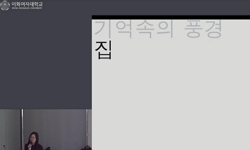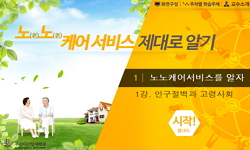Vitamin D is usually synthesized when our skin’s epidermis is exposed to natural sunlight during our daily lives. But for those who spend most of their time indoors or use a sunscreen to block ultraviolet rays, there is not enough exposure to natura...
http://chineseinput.net/에서 pinyin(병음)방식으로 중국어를 변환할 수 있습니다.
변환된 중국어를 복사하여 사용하시면 됩니다.
- 中文 을 입력하시려면 zhongwen을 입력하시고 space를누르시면됩니다.
- 北京 을 입력하시려면 beijing을 입력하시고 space를 누르시면 됩니다.
비타민D 합성을 위한 고령자 주거의 실내외 자연광 노출 시간 = Length of Exposure to Natural Sunlight Indoors and Outdoors in the Living Environment of the Elderly for the Synthesis of Vitamin D
한글로보기https://www.riss.kr/link?id=A101750386
- 저자
- 발행기관
- 학술지명
- 권호사항
-
발행연도
2014
-
작성언어
Korean
- 주제어
-
등재정보
3903
-
자료형태
학술저널
-
수록면
157-161(5쪽)
- 제공처
-
0
상세조회 -
0
다운로드
부가정보
다국어 초록 (Multilingual Abstract)
Numerous studies have shown that the daily recommended dose of Vitamin D is slightly higher than an average adult. In this paper, based on preceding studies with keywords ‘the elderly’ and ‘Vitamin D’, a mean value was calculated to conclude that the daily recommended dose for Vitamin D is 1000 IU. First, the length of exposure needed to synthesize 1000 IU of Vitamin D outdoors was calculated. Based on the result, the length of exposure needed to synthesize Vitamin D indoors was concluded.
The environment used was a modern residential building located in Seoul with light limited to that only coming through a window to the south. The building had a balcony or an awning and the light was direct sunlight with a body exposure rate of 6-10%. The above results were used to present a guideline for synthesis of Vitamin D using natural sunlight for the elderly.
Vitamin D is usually synthesized when our skin’s epidermis is exposed to natural sunlight during our daily lives. But for those who spend most of their time indoors or use a sunscreen to block ultraviolet rays, there is not enough exposure to natural sunlight, leading to an insufficiency of Vitamin D. Vitamin D helps prevent osteoporosis, enhances one’s immune system and protects the body from various fungi or germs. For elderly who spends most of their time indoors rather than outdoors, faces challenging to absorb Vitamin D, that helps prevent osteoporosis, enhances one’s immune system, and protects the body from various fungi or germs, through natural light Moreover, it is urgent to provide a way for the elderly to synthesize Vitamin D since they experience a rapid deterioration of bone strength and reduction in muscle mass.
Numerous studies have shown that the daily recommended dose of Vitamin D is slightly higher than an average adult. In this paper, based on preceding studies with keywords ‘the elderly’ and ‘Vitamin D’, a mean value was calculated to conclude that the daily recommended dose for Vitamin D is 1000 IU. First, the length of exposure needed to synthesize 1000 IU of Vitamin D outdoors was calculated. Based on the result, the length of exposure needed to synthesize Vitamin D indoors was concluded.
The environment used was a modern residential building located in Seoul with light limited to that only coming through a window to the south. The building had a balcony or an awning and the light was direct sunlight with a body exposure rate of 6-10%. The above results were used to present a guideline for synthesis of Vitamin D using natural sunlight for the elderly.
목차 (Table of Contents)
- Abstract
- 1. 서론
- 2. 이론고찰
- 3. 비타민 D 합성을 위한 실외 노출시간
- 4. 비타민 D 합성을 위한 실내 노출시간
- Abstract
- 1. 서론
- 2. 이론고찰
- 3. 비타민 D 합성을 위한 실외 노출시간
- 4. 비타민 D 합성을 위한 실내 노출시간
- 5. 결론 및 한계
- 참고문헌
동일학술지(권/호) 다른 논문
-
전통적 요소를 반영한 커피전문점 매장의 공간마케팅 사례연구
- 한국실내디자인학회
- 정희영(Jung, HeeYoung)
- 2014
- 3903
-
고령사회에 대응한 아파트 단지 내 커뮤니티 키친 사례연구
- 한국실내디자인학회
- 이정은(Lee, Jung Eun)
- 2014
- 3903
-
- 한국실내디자인학회
- 강철희(Kang, Chul-Hee)
- 2014
- 3903
-
인천 국제공항 VIP 라운지의 서비스 영역 확대 및 디자인에 관한 연구
- 한국실내디자인학회
- 박혜란(Park Hye-Ran)
- 2014
- 3903




 DBpia
DBpia






